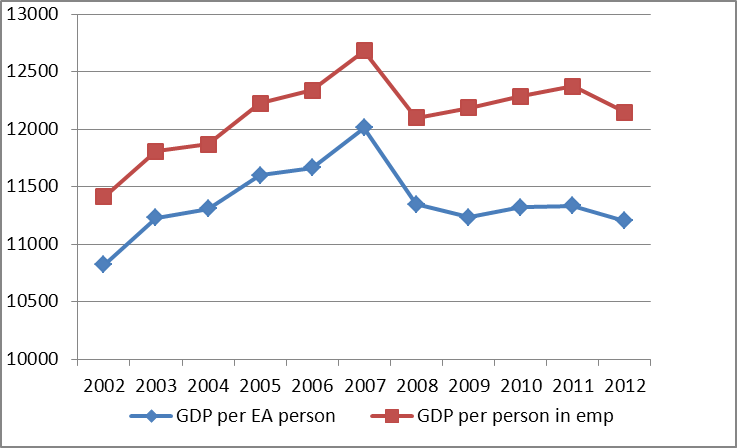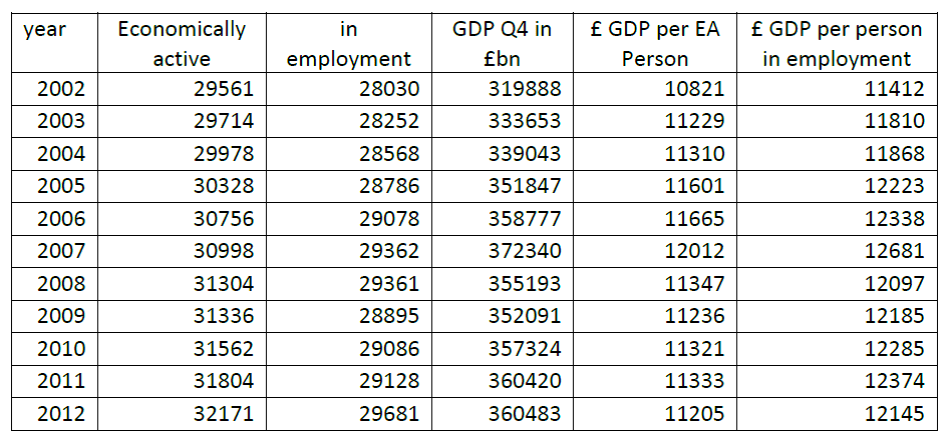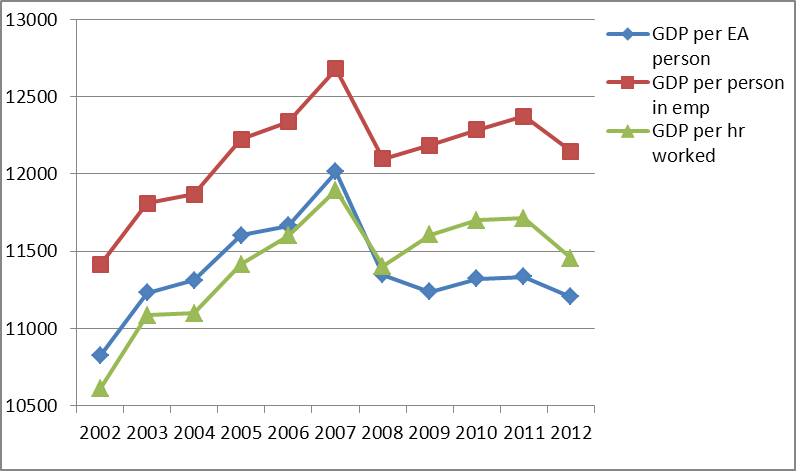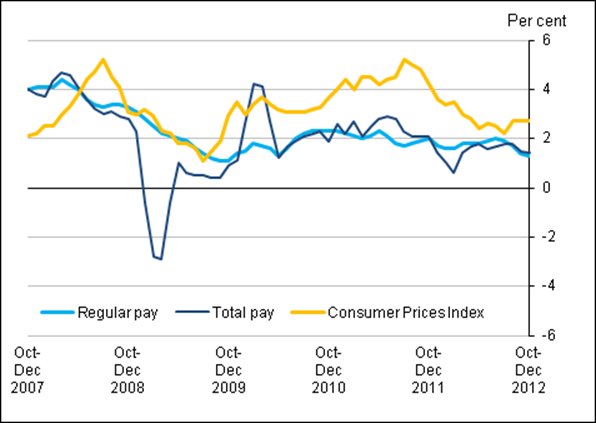In our recent report, “Ailing economy, failing solutions”, we said
Traditional productivity methodology has a fundamental flaw when it comes to measuring the performance of a national economy with a high level of unemployment. This is because productivity methodology ignores the wasted capacity of a nation’s economically active, but unemployed, population
In effect, traditional productivity methodology implicitly assumes that there is no unemployment, or that by reducing the volume of labour per unit of output, the displaced employees will quickly be more productively employed elsewhere in the economy – which is not borne out by reality
We therefore argued that by far the most significant high-level measure of productivity for a national economy is the value of ‘output’ (represented by GDP) divided by the “economically active” population, i.e. the sum of those in employment and those unemployed but seeking work.
The waste caused by unemployment
We have looked at the data for the decade from 2002 through to 2012, and Chart 1 at the head of this blog shows the difference between GDP per person in employment, and GDP per ‘economically active’ person. For this we have taken the GDP in the 4th Quarter of each year, and the number of economically active etc. from the September to November figures for each year, which is the latest period we had for 2012. While these periods do not map perfectly, they are very close and give an authentic picture.
The gap between two lines in effect represents the waste caused by unemployment. It will be seen that the difference is much wider post financial crisis from 2008. Also, that while GDP per person in employment rose slightly from 2008 to 2011 (before dropping badly in 2012), GDP per economically active person (i.e. including the unemployed) remained virtually unchanged from 2008. No increase over 5 long years, and similar too to the levels of 2003 and 2004.
Here are the data in tabular form:
19 feb table Prime article













3 Responses
Frances,
All very noble.
Unfortunately it falls into the progressive trap of believing that everybody is a self-starter. They are not. A great many, if not the majority, have to be directed and like being directed.
As Mrs Doyle would say ‘some of us like drudgery’.
Basic income can’t work because you then have no way of ensuring that needed production happens.
The market has failed to spontaneously provide an income. It is most unlikely that it will spontaneously provide a standard of living either.
The state has to reserve the right to require output in return for its scrip.
Neil, I’m not convinced that state-provided drudgery is any better than drudgery provided by the private sector as a cheap alternative to automation. Personally I would prefer a citizen’s basic income and encourage people to do a huge range of things, paid and unpaid, that they find personally fulfilling and that benefit society as a whole.
Policy responses that use people to perform a job when a machine could do it (hand car washes anybody) are very wrong. Crowding out mechanisation is not the way forward.
Let the private sector mechanise. More than that, force them to mechanise by making sure they pay the full cost of labour. And any labour that is spare should be purchased by the state at a fixed price and deployed for the public good.
For me that is the most virtuous of circles. Increasing common goods that the private sector can exploit. Increased mechanisation to get rid of drudgery and yet everybody is still engaged productively with sufficient income.
We know how to make this happen. So let’s do it.